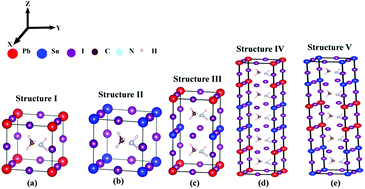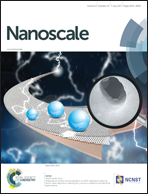Engineering band gap and electronic transport in organic–inorganic halide perovskites by superlattices†
Abstract
Organic/inorganic lead and tin halide perovskites (CH3NH3PbI3 and CH3NH3SnI3) have been promising for photovoltaics because of their high charge carrier mobility, and large absorption coefficient and diffusion length. Both these perovskites also have a notable Seebeck coefficient, depending on the doping level, indicating their potential as thermoelectrics. We create superlattices of these hybrid organic–inorganic halide perovskites and investigate electronic transport through them using first principles computations and experiments. While the transverse components of electrical and electronic thermal conductivities for the superlattices are higher than those for simple perovskite lattices, their longitudinal counterparts are 103 times smaller resulting in overall lower transport coefficients. The superlattice structures have more carriers, but with less average energy compared to pure perovskites causing a lower Seebeck coefficient. However, with the impedance to thermal conduction being relatively stronger than that to charge transfer, the electronic thermoelectric figure of merit of superlattices is higher. Our results lead towards a unique opportunity to engineer the band gap of perovskites by nanostructuring for thermoelectric and optoelectronic applications.



 Please wait while we load your content...
Please wait while we load your content...